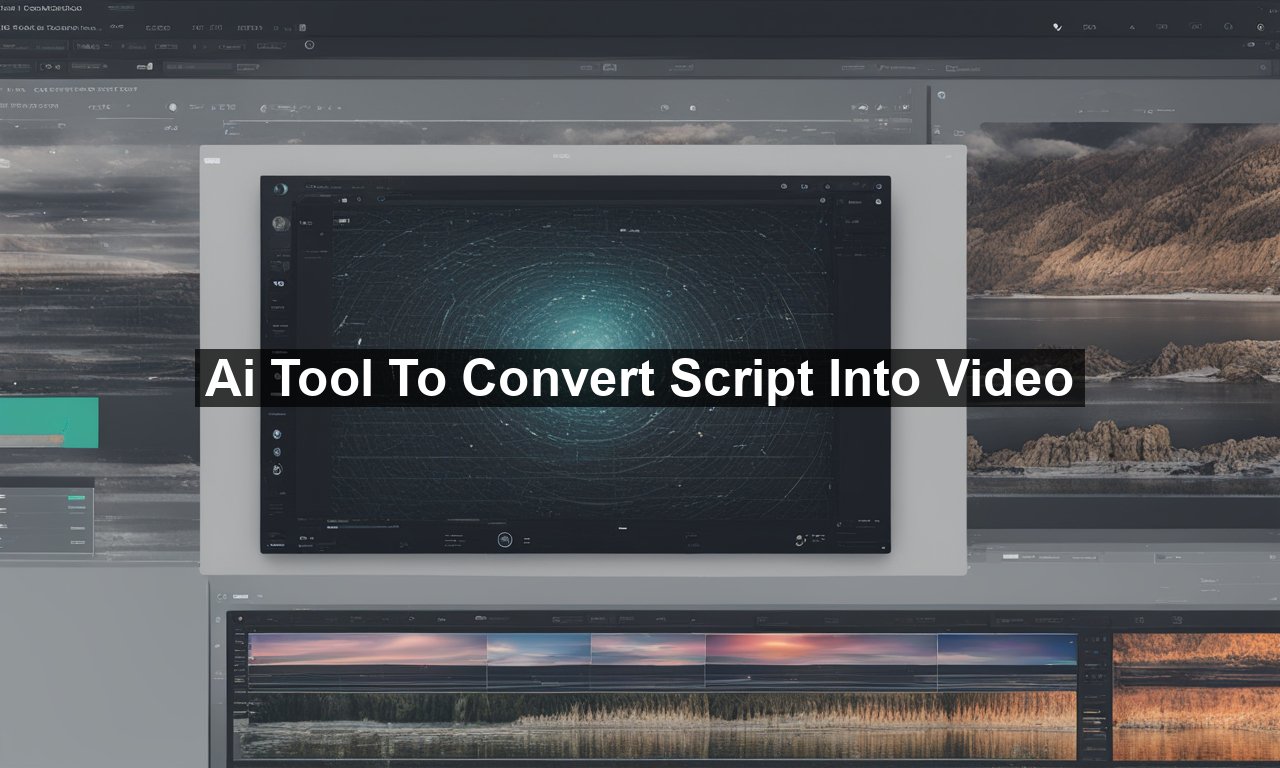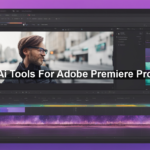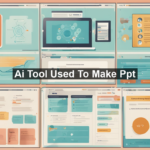Are you still converting scripts into video manually, spending countless hours and resources? What if there was an AI tool to convert scripts into captivating, professional videos in a fraction of the time? Imagine the possibilities for content creators, marketers, educators, and anyone needing video content. In this blog post, we’ll dive into the significance, benefits, and best practices of using AI tools to convert scripts into videos seamlessly. Plus, we’ll provide valuable tips and reliable resources to help you get started.
Why AI Tools for Script-to-Video Conversion are Game-Changers
Creating videos from scripts has traditionally been a labor-intensive task, demanding a lot of time, creativity, and technical skills. However, AI tools have revolutionized this process by automating much of the work. These tools utilize advanced algorithms and machine learning models to understand the script, generate visual content, and even add appropriate audio and effects. Here’s why they are indispensable in today’s fast-paced digital world:
- Time Efficiency: AI reduces the time involved in video creation from hours or days to mere minutes.
- Cost-Effectiveness: Cut down on hiring costs for video editors and animators.
- Consistency: Ensure your videos maintain a high and consistent quality.
- Accessibility: Make video creation accessible even to those with little to no technical skills.
How Do AI Tools Convert Scripts into Videos?
You might be wondering, how exactly do these AI tools work? While each tool has its unique features, the fundamental process generally involves a few key steps:
1. Script Analysis
AI tools start by analyzing your script. They break down the text to understand the context, identify key themes, and recognize the tone of the content. Natural Language Processing (NLP) algorithms are often employed in this stage to extract meaningful insights from the text.
2. Scene Creation
After understanding the script, the tool generates a storyboard, mapping out scenes and sequencing them logically. Depending on the AI tool’s capability, it may suggest visuals, animations, or live-action elements to match the script’s content.
3. Adding Audio
AI tools often come with text-to-speech features, allowing them to generate voice-overs. Some even offer customization options for voice style, tone, and pacing. Additionally, they might integrate background music and sound effects to enhance the video’s appeal.
4. Rendering
Once all elements are in place, the AI tool compiles and renders the video. This process is usually swift, utilizing cloud-based technologies to deliver high-quality video files ready for publishing.
Best AI Tools for Script-to-Video Conversion
With numerous options available, choosing the right AI tool might seem daunting. Here are some popular tools renowned for their features and efficiency:
Lumen5
Lumen5 is a favorite for many marketers and content creators. Its user-friendly interface and powerful customization options make it an excellent choice. Lumen5 uses AI to transform your blog posts and scripts into engaging videos in minutes.
Animoto
Animoto offers a drag-and-drop interface along with AI-powered features. It’s ideal for creating professional-quality videos without needing any advanced technical skills. Its wide range of templates and customization options make it a versatile tool.
Synthesia
Synthesia focuses on generating AI avatars that can speak in various languages and tones. It’s particularly useful for creating educational or corporate training videos, making it possible to deliver personalized video content globally.
Tips for Effective Script-to-Video Conversion
Even with cutting-edge AI tools at your disposal, there are some best practices to ensure your videos are compelling and engaging:
- Keep It Concise: Viewers often have short attention spans. Aim for crisp, succinct scripts that get to the point quickly.
- Use Visuals Wisely: Leverage the AI tool’s suggestion but always review to ensure the visuals align perfectly with your script.
- Customize Audio: While AI-generated audio is convenient, adding a human touch through custom voice-overs can enhance engagement.
- Review and Refine: No AI tool is perfect. Always review the final output to make necessary tweaks and modifications.
Future Prospects: What Lies Ahead?
The future of AI in video creation looks incredibly promising. As technology advances, we can expect even more sophisticated features, including:
- Enhanced Personalization: Tailor videos to individual viewers using AI algorithms.
- Improved NLP: More nuanced understanding of scripts, including tone, intent, and emotions.
- Real-Time Rendering: Immediate video generation without compromising quality.
Moreover, companies like Google and OpenAI are continuously pushing the boundaries of AI capabilities, promising exciting developments in the realm of video creation.
Conclusion: Embrace the Future of Video Creation
AI tools for converting script-to-video are proving to be revolutionary, making video creation more accessible, efficient, and cost-effective than ever before. As you explore these tools, remember to experiment, customize, and consistently review your content for best results.
Ready to dive in and create stunning videos effortlessly? Discover more about AI’s impact on video creation and other exciting technological advancements [here](https://www.forbes.com/sites/forbestechcouncil/2022/12/07/the-top-five-ai-technologies-revolutionizing-video-content-creators/?sh=52b2fcb1339b).
Unleash the potential of AI in transforming your scripts into dynamic video content. The future is here, and it looks pretty impressive.











